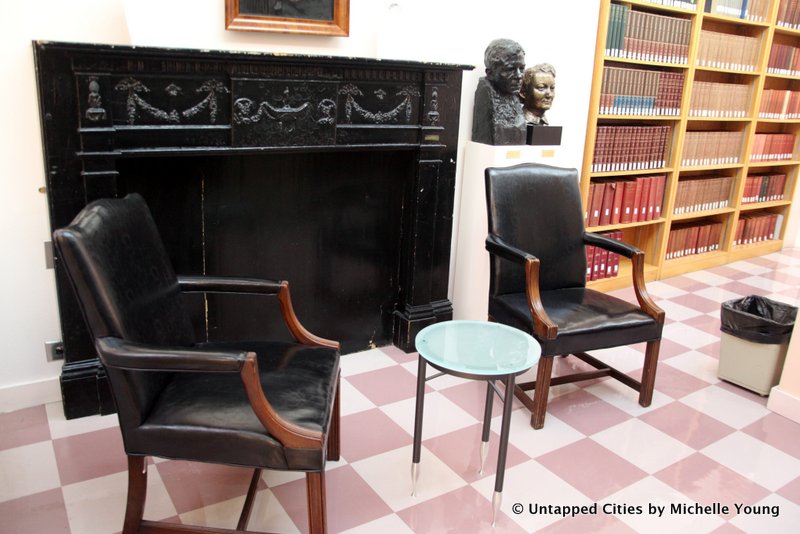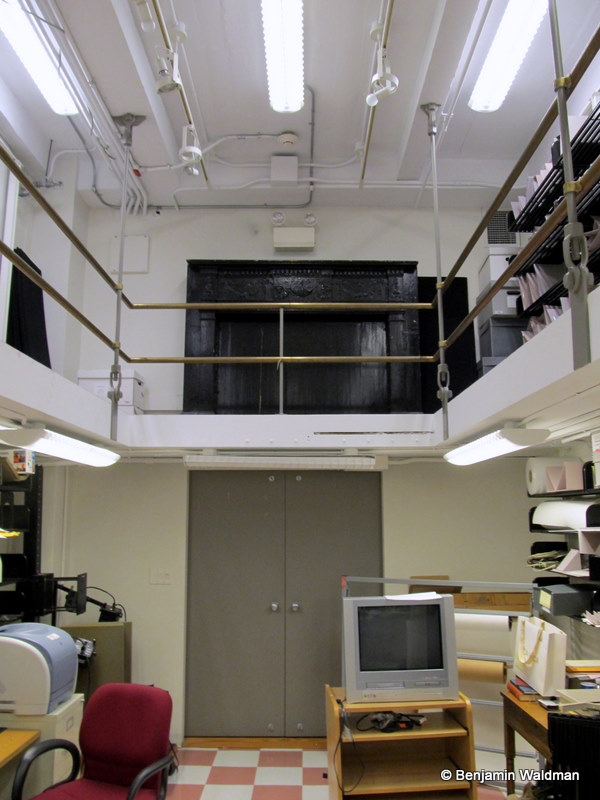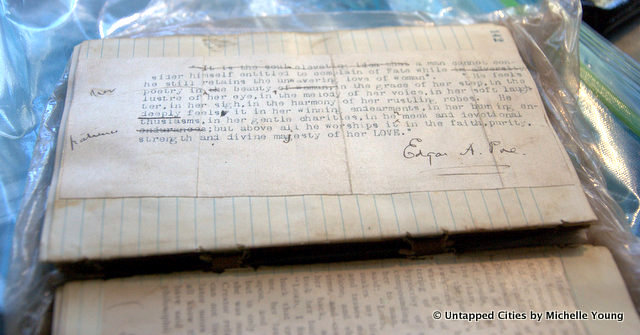
It is a rarefied experience in New York City to embark on a quest to find a long lost relic. Fortuitously, I had just that luck this year. While researching the article “In Search of Poe,” for Untapped New York, I discovered a 1908 New York Times article noting Columbia University’s acquisition of the Raven Mantel, the mantelpiece which had once adorned the fireplace in the room where Poe penned his most famous poem, “The Raven.” Having attended Columbia as an undergraduate, the mantel piqued my interest in light of the fact that I had previously been unaware of its existence. Therefore, I decided that it was well worth a search of Columbia’s campus to determine whether or not the University was still in possession of this Poe artifact.
Going into my quest, I knew very little about the Mantel’s relationship with Columbia. I knew that Columbia University President Nicholas Butler assured Colonel Hemstreet (the mantel’s savior before the demolition of Poe’s farmhouse) that the mantel would be “appropriately placed and sedulously cared for” and on January 4, 1908, Columbia University was presented with the mantelpiece, and authenticating documentation attesting to its provenance. Additionally, I had discovered a print of the mantel locating in the Columbia University Quarterly (Volume 10 Issue 1 of the Columbia University Quarterly (1907-1908)) and the only photograph of the mantelpiece on the Internet which came from the Raymond Biswanger Slide Collection, owned by the University of Pennsylvania, had been taken in 1954.
My first promising lead came from a website stating that the mantel was located in Philosophy Hall. The beginning of the search was less than promising. The people I asked for assistance first in Philosophy Hall and then in Butler responded with the same incredulous look, clearly convinced that I was on quixotic hunt for a lost treasure. They were amazed that such a relic could be located at Columbia, but they knew nothing of its existence.
I was told to check out Butler Library, that perhaps, the University’s repository of information would be of assistance. Unfortunately, it was not meant to be as no one was aware of the mantel’s existence. I wandered around Columbia’s campus almost aimlessly trying to determine what fireplace this relic might now adorn.
After a few hours, I decided that my quest was not meant to be fulfilled and decided to check Butler once more before admitting defeat. This time, my luck was about to change. I spoke with a staffer from the Library Information Office. She suggested that I ask someone at the Columbia Archives, located on the sixth floor of Butler. The door was locked and no one answered to my rapping on this door. I stopped by the Rare Book and Manuscript Library, next door to see if they knew when the archivist would return. The librarian asked what I was looking for and I responded the elusive Raven Mantelpiece. She smiled and said that it was in an office located right behind her desk. I was led there, in awe, that I had actually found this elusive grail. It was perched behind a railing on the mezzanine of the back room, forgotten.

In the course of researching the mantelpiece for this New York Times article, I discovered that the mantelpiece had been situated in Low Library, the University’s library at the time until 1974; forty years after Low Library ceased being the University’s library, when it was unceremoniously transferred to Butler.
In May, the mantelpiece was moved to a more prominent location, still within the Rare Book and Manuscript Library. Asked why, Emily Donahue, a Columbia spokeswoman, told The New York Times “that ‘there really was no “reason”’ for it. ‘There is only so much space in the libraries and items shift regularly as exhibitions come up and down,” she said. Coincidence (as Columbia would like to believe) or not, it is great that the University is once again honoring this great American poet.
Another unexpected boon was that great granddaughter of Colonel Hemstreet, Susie Hazel, contacted us as a result of this research. Stay tuned for our interview with her, and to pique your interest, below is a photograph of the Colonel’s journal, which is in her possession. The journal included an autographed note by Edgar Allan Poe, which Hazel surmised may be Poe critiquing some of Hemstreet’s own poetry.







